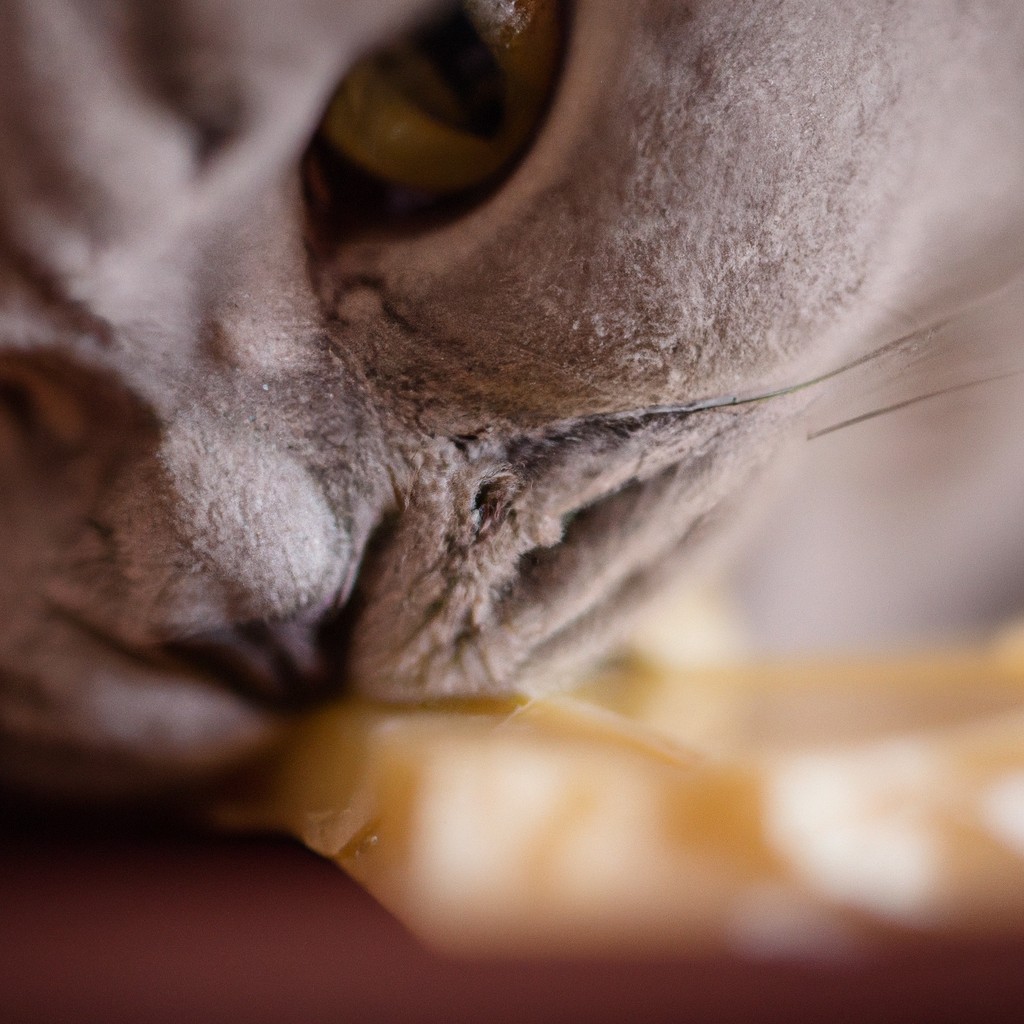No, foxes cannot eat chocolate because it contains theobromine, which is toxic to many animals.
Foxes, like many other animals, should not consume chocolate. It’s a common misconception that chocolate is only toxic to dogs, but in reality, the theobromine found in chocolate is harmful to many animals, foxes included.
This article will delve into the reasons why chocolate is dangerous for foxes, the symptoms of chocolate poisoning to watch out for, and safe alternatives to chocolate that you can offer to a fox.
Stay tuned to learn more about the dietary needs and restrictions of foxes.
Key takeaways:
- Chocolate contains theobromine, toxic to foxes
- Foxes have an omnivorous diet, balancing plants and meat
- Theobromine toxicity affects the nervous and cardiovascular systems
- Dark chocolate is more dangerous than milk chocolate
- Look out for symptoms like restlessness, seizures, and comas
Inside
Fox Diet and Eating Habits

Foxes possess an omnivorous diet, grazing on a range of food sources with a high degree of adaptability to available foodstuffs. They often have a blended diet, balancing their intake between plants and meat.
During the warmer months, foxes partake in fruits, vegetables, and various forms of insects. During the colder seasons, foxes tend to lean more on meaty meals, seeking out small rodents, birds, and rabbits.
Grain-based foods, nuts, and seeds also make up a part of their diet. A fox’s distinct food habit is to bury excess food for leaner times, exhibiting a clever, preservative instinct.
Despite their open-minded dietary habits, there are foods that foxes should avoid, chocolate being a key concern due to the potential harm it may cause. This fact raises the importance of equipping fox owners or those interacting with this species with vital knowledge on their eating habits.
Knowing what a fox naturally consumes can help in identifying abnormal eating behaviors or potential ingestion of harmful substances. One can take preventive measures to limit their access to hazardous foods and keep them healthy.
Understanding Why Chocolate Is Harmful to Foxes
Chocolate contains elements such as theobromine and caffeine that are toxic to foxes. The body of a fox lacks the necessary enzymes to metabolize these compounds. Therefore, they build up to dangerous levels in the fox’s system, leading to chocolate poisoning.
Theobromine toxicity: This is a leading risk of foxes consuming chocolate. The compound affects the nervous system and cardiovascular function, leading to adverse reactions, including seizures and heart failure.
Caffeine sensitivity: Foxes cannot handle caffeine. Similar to theobromine, caffeine will negatively impact the central nervous system, triggering possible tremors, excessive thirst, and restlessness.
Metabolization: The process of breaking down food into energy is different in animals. Foxes can’t metabolize theobromine and caffeine, causing an accumulation of these substances that result in toxic symptoms or fatal consequences.
Dosage matters: The darker and purer the chocolate, the more the theobromine content. Hence, even a small piece of dark chocolate can be harmful to a fox.
Individual Sensitivity: Like humans, animals have individual sensitivities. Some foxes may experience severe poisoning after consuming a very small quantity of chocolate.
Despite their curiosities, it’s crucial to ensure foxes are not given chocolates due to these potential life-threatening health risks.
Exploring the Danger of Chocolate for Foxes
Chocolate contains a compound known as theobromine, which is difficult for many animals to metabolize, and foxes are no different. While humans can easily digest theobromine, when foxes ingest it, this compound can remain in their system for a long time, causing serious health complications.
Excessive consumption of theobromine can lead to theobromine poisoning, or more commonly known as chocolate poisoning. The dark chocolate or pure cocoa powder versions are particularly harmful as they contain the highest concentrations of theobromine. However, all types of chocolate, even white chocolate, can pose a threat.
The health risks associated with theobromine poisoning include tachycardia (abnormally fast heart rate), tremors, seizures, and in severe cases, even death. It’s important to know that even a small amount of chocolate can be detrimental to a fox’s health.
Grey and red foxes are particularly sensitive to theobromine, but no type or species of fox should ever ingest chocolate. It’s crucial for their health and safety to ensure chocolates are never left within their grasp or fed to them intentionally.
If a fox is suspected to have consumed chocolate, it’s imperative to seek immediate veterinary attention. Signs to watch out for include restlessness, excessive panting or drooling, irregular heart rhythm, occasional seizures and in worst-case scenarios, comas.
Avoid feeding foxes any human food or leftovers. Feeding foxes species-specific diet is more beneficial for their health. Gardens and outdoor areas should be cleared of any trash to prevent foxes from scavenging, especially in urban areas where interaction between foxes and human habitats are more common.
Refrain from using cocoa-based mulch in gardens. Foxes may be attracted to its aroma and accidentally ingest it, causing health issues.
Offer alternative, fox-friendly snacks such as cooked chicken, small amounts of cheese, fruit, and vegetables. However, these should only be offerings and not replace their natural food sources.
Symptoms of Chocolate Poisoning in Foxes
Upon ingestion of chocolate, a fox may exhibit various signs that indicate the onset of chocolate poisoning. Initial symptoms include increased thirst and frequent urination, attributable to the diuretic properties of theobromine, a substance found in chocolate.
Restlessness and hyperactivity could also manifest as the theobromine stimulates the central nervous system. A potentially fatal increase in heart rate (tachycardia), rapid breathing (tachypnea), and abnormal heart rhythms may follow.
Gastrointestinal signs include vomiting and diarrhea, resulting from the irritant effects of theobromine on the stomach and intestines.
In severe cases, neurological symptoms such as muscle tremors, seizures, and incoordination may emerge, leading to life-threatening conditions.
Immediate veterinary attention following the detection of these symptoms significantly improves the chances of recovery.
To spot these signs early:
- Observe your fox’s behavior. Consider unusual excessive hyperactivity as a potential warning.
- Watch out for any changes in eating and drinking patterns.
- Pay attention to your fox’s breathing and heart rate.
- Monitor for any signs of discomfort around the abdominal area.
- Check for indications of loss of body control, including seizures.
Immediate Steps to Take If Your Fox Has Consumed Chocolate
Upon discovering that a fox has consumed chocolate, swift action must be the priority. First, remain calm and aim to keep the fox in a quiet and comfortable environment. Stress could exacerbate the situation.
Second, establish how much and what kind of chocolate the fox has consumed. Different types of chocolate have varying levels of theobromine, a compound toxic to many animals, including foxes. For example, dark chocolate contains more theobromine than milk chocolate. Knowing the quantity and type of chocolate is crucial for the next step.
Thirdly, contact a veterinarian immediately, providing them with all the known information about the fox’s chocolate consumption. Never attempt a home remedy or induce vomiting without consulting a veterinarian. Treatment might involve inducing vomiting, administering activated charcoal to absorb the theobromine, or even hospitalization for monitoring and further treatment.
Last, while waiting for veterinarian assistance, keep a close eye on the fox for any signs of distress or worsening condition and report these to the veterinarian. In this situation, time is of the essence; quick response could save a life.
Remember, prevention is always better than cure; keep chocolate out of fox’s reach to safeguard their health.
Preventive Measures to Keep Your Fox Safe From Chocolate Poisoning
Effective preventive measures are crucial to keep your fox unaffected by the harmful effects of chocolate. It is advisable to store chocolate and chocolate products in closed cabinets or high shelves where our furry friends cannot reach. Always keep a keen eye on what your fox is eating. Special attention should be paid during special occasions or events where chocolates could be within a fox’s reach.
In terms of diet management, refrain from sharing human food with foxes. Always consult with a vet for the suitable diet plan. Include in their diet only those food items which are vet-approved and refrain from offering table scraps or treats that may contain chocolate.
Another important step is to educate all members of the household about the dangers of chocolate to foxes. Make sure they understand the seriousness of this risk and ensure they’re aware not to offer any chocolate or chocolate-based treats to the fox.
Lastly, if your fox has a history of foraging, consider a controlled environment. It eliminates the risk of encountering chocolate products, ensuring that we provide them a safe and healthy environment.
How to Detect Chocolate Consumption in Foxes
First, owners need to observe any noticeable changes in a fox’s behaviour. Symptoms of chocolate consumption often begin with hyperactivity due to increased heart rates. Restlessness and panting are also common indicators.
It’s important to closely monitor for signs of increased thirst and urination. Chocolate can cause kidney function problems, which leads to these symptoms.
In severe cases, foxes may exhibit seizures or tremors. Coupled with a rapid heartbeat, this is a serious sign chocolate has been consumed.
Owners should also keep an eye out for gastrointestinal issues. Vomiting and diarrhea are often symptoms, as the fox’s body tries to expel the harmful substances.
Physical examination plays a crucial role in detection. Check the fox’s mouth for remnants of chocolate or its wrapper. Chocolate has a strong, distinct smell which is hard to miss.
Lastly, pay attention to the surroundings. Leftover chocolate wrappers in the fox’s habitat can indicate consumption. If there are missing chocolate pieces from a pantry or kitchen, a fox could potentially have ingested it.
Alternative Safe Snacks: What Foxes Can Eat Instead of Chocolate
Fruit and vegetables serve as healthy alternatives to chocolate for foxes, including apples, pears, and berries. These are naturally sweet and provide essential nutrition. Always remember to remove any seeds or pits as these can pose potential health hazards.
Foxes are omnivores and can enjoy a wide range of meat. Small pieces of cooked chicken or turkey are safe options, avoiding any seasoning or oils as these can upset their digestive system.
Aside from meat, insects are an inherent part of a fox’s diet in the wild. The occasional serving of mealworms, crickets, or other commercially available insects is beneficial.
Lastly, high-quality dog food can also be offered to foxes. Check that it’s grain-free and high in protein, avoiding anything that contains chocolate or cocoa. This can serve as a balanced meal option for foxes and is easy to source.
In general, it’s crucial to offer variety in a fox’s diet that reflects their nutritional needs and natural feeding behaviors. Consult with a vet specialized in wildlife for personalized advice on feeding your fox.
Maintaining a Healthy Diet for Foxes
Foxes are omnivores so their diet needs to represent that diversity. Incorporate various sources of protein, vegetables, fruits, and grains.
Adopt a feeding schedule to maintain consistency and aid digestion.
Ensure hydration; provide fresh water daily as it is crucial to their health.
Raw meat, eggs, and fish can make up the protein part of their diet.
Safe fruits are apples, berries, and melons.
For vegetables, opt for leafy greens, peppers, and pumpkin.
Oatmeal and brown rice serve as great grain resources.
Avoid feeding your fox cooked bones; they can splinter and cause harm.
Also, remember not to expose your fox to food that contains caffeine, theobromine, and alcohol. These substances found in human food, like coffee, tea, chocolate, and alcohol are toxic to foxes.
Rotate between different food types and adjust quantities to prevent over or underfeeding. Monitor your fox’s weight and behavior to ensure the diet is working well, and don’t hesitate to consult with a veterinarian for specialized advice.
FAQ
Is chocolate safe for fox?
No, chocolate is not safe for foxes as it contains chemicals that can be highly toxic to them.
Can foxes have sweets?
While foxes may have a taste for sweets, it is not recommended to feed them such foods due to their need for a diet as close to natural as possible.
Do foxes eat candy?
No, foxes should not eat candy as it can be harmful to them.
How does chocolate affect the health of foxes?
Chocolate consumption is harmful to foxes due to the presence of theobromine, a stimulant they cannot metabolize efficiently, potentially leading to health problems such as heart failure, seizures, or even death.
What are the risks of feeding chocolate to foxes?
Feeding chocolate to foxes is dangerous as it contains theobromine, which can cause serious health issues such as abnormal heart rhythm, kidney failure, and in severe cases, death in these animals.
Are there safe alternatives to chocolate for foxes?
Yes, fruits such as apples, pears, and bananas are safe and healthy alternatives to chocolate for foxes.




